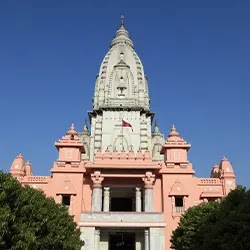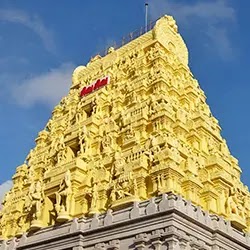Know About 12 Jyotirlingas And Their Significance
He is Natraj, the Mahakaal, the destroyer among the ‘Tridev’. As devotees prepare their homes and hearts to worship Lord Shiva on the auspicious occasion of ‘Mahashivratri’, here’s look at the 12 Jyotirlinagas spread across India.
Before you get to know about the special shrines, you must know what exactly is a Jyotirlinaga or Jyotirlinagam
A Jyotirlinga is a shrine where Lord Shiva is worshipped in the form of a fiery column of light. ‘Jyoti’ means ‘radiance’ and Lingam, the Shiva Lingam-‘the mark or sign’ of the Almighty or the phallus symbol. Hence, Jyotirlingam means the the radiant sign of the Almighty. There are twelve traditional Jyotirlinga shrines in India. The 12 Jyotirlingas are Somnath in Gujarat, Mallikarjuna at Srisailam in Andhra Pradesh, Mahakaleswar at Ujjain in Madhya Pradesh, Omkareshwar in Madhya Pradesh, Kedarnath in Uttrakhand, Bhimashankar at Pune in Maharashtra, Viswanath at Varanasi in Uttar Pradesh, Tryambakeshwar at Nashik in Maharashtra, Vaijyanath Temple in Deoghar District of Jharkhand, Aundha Nagnath at Aundha in Hingoli District in Maharashtra, Rameshwar at Rameshwaram in Tamil Nadu and Grushneshwar at Ellora near Aurangabad, in Maharashtra.
Somnath Temple, GujaratBelieved to be the first among the twelve Jyotirlinga shrines of Shiva, the Somnath temple is located in Prabhas Patan. It is considered to be one of the most important pilgrimages in India and a great tourist spot in Gujarat. Somnath means “Lord of the Soma”, an epithet of Shiva. The history of Somnath Temple is kind of interesting as according to legend the temple was created by the Moon God himself. The scared place of worship has braved numerous attacks (destroyed 16 times and re-built) only to remain standing strong.
Kashi Vishwanath, Uttar Pradesh
One of the most famous temples in India is that of Kashi Vishwanath Temple. Dedicated to Lord Shiva, the Jyotirlinga shrine is located in Varanasi, Uttar Pradesh with the temple standing on the banks of holy River Ganga. Called the holiest of Shiva temples, Vishvanatha means the Ruler of The Universe. On the occasion of Maha Shivaratri festival, the ghats are packed with Shiva devotees from all around the world. As per Hindu mythology, Lord Shiva married Goddess Parvati on Mahashivratri, a day celebrated with joy and fervour.
Mahakaleshwar, Madhya Pradesh
Shri Mahakaleshwar Jyotirlinga situated in the ancient city of Ujjain in Madhya
Pradesh. The The idol of Mahakaleshwar is known to be dakshinamurti, which means
that it is facing the south. One of the 12 Jyotirlingas in India, the lingam at
the Mahakala is believed to be swayambhu (born of itself) deriving currents of
power shakti) from within itself. On occasion of Maha Shivratri, the Lord Shiva
devotees worship whole night along with a huge fair organized in the temple. It
is believed, Shiva, the deity of time has its blessing on the city of Ujjain.
Mallikarjuna, Andhra Pradesh
Sri Mallikarjuna Jyotirlinga Temple is located at Srisailam in Andhra Pradesh.
Lord Shiva who goes by the name Mallikarjuna is the deity of worship while Maha
Shivaratri is the most important festival celebrated at Srisailam Mallikarjuna
Swamy temple. According to the mythological story, Shiva and Parvati stayed in
Shrishailam, in order to remain close to his son Kartikey who had decided to
stay alone on Mount Kravunja. Mallikarjuna Jyotirlinga is one of the 275 Paadal
Petra Sthalams that are amongst the greatest Lord Shiva temples in Asia.
Omkareshwar, Madhya Pradesh
Omkareshwar Jyotrilinga, one of the 12 worshipped Jyotirlinga shrines is
situated at Mandhata an island in the Narmada River in Madhya Pradesh. The name
“Omkareshwar” is based on the shape of the island, which appears to be Om.
There are two main Lord Shiva temples – Omkareshwar which literally means “Lord
of Omkaara or the Lord of the Om Sound” and other is, Amareshwar which stands
for “Immortal lord” or “lord of the Immortals or Devas”. This is the second
jyotirlinga shrine in Madhya Pradesh, first being Mahakaleshwar in Ujjain.
Kedarnath, Uttarakhand
This Jyotirling temple is considered to be the most difficult one to visit by Lord Mahadev bhakts. Located at the height of 3,583 m from Rishikesh, Uttarakhand, Kedarnath Temple with extreme weather conditions, going to the Jyotirlinga remains a challenging affair. It is accessible only for six months a year. It is one of the 275 Paadal Petra Sthalams and was built by the Pandavas and revived by Adi Sankaracharya.
Bhimashankar, Maharashtra
One of the five jyotirlingas shrines in Maharashtra, Bhimashankar Temple is
located in Pune. It is also the source of River Bhima in the Bhimashankar hills
in Khed Taluka. Built in the Nagara style of architecture, this temple dates
back to the 18th century. According to the legend, it is believed that the
ancient shrine was erected over a Swayambhu Linga or a Self Emanated Shiva Linga.
Baidyanath, Jharkhand
Baidyanath Temple or Baba Baidyanath Dham or simply Baba Dham is one the most
sacred abodes of Lord Shiva. This Jyotirlinga shrine is located in Deoghar,
Jharkhand. The jyotirlinga got its name Vaidhya literally meaning ‘doctor’ from
the fact that Lord Shiva cured demon king, Ravana as he was the greatest Shiva
worshipper. Millions of pilgrims visit to attend Shraavana mela, and the Maha
Shivratri is also the famous festival celebrated in the temple.
Ramanathaswamy, Tamil Nadu
The Rameswaram Jyotirlinga temple is one of the most highly worshipped and sacred pilgrimage sites in India. According to Hindu mythology, the jyotirlingam was made by Lord Rama himself to make amends of killing Ravana, a Brahmin in the battlefield. He asked Hanuman to bring a lingam from Kailash, but as it was getting late, he worshipped the lingam made of sand by Devi Sita. It is believed that alike lingam is placed inside the sanctum. This Lingam worshipped by Lord Rama is known as Ramanathar. Ramanathaswamy Temple is situated at the Rameswaram Island in Tamil Nadu.
Nageshvara, Gujarat
Nageshvara Jyotirlinga temple is located near Dwarka in Gujarat. According to the Shiva Purana, Nageshvara Jyotirlinga is in ‘the Darukavana, an ancient name of a forest in India. The Indian mythology suggests that Lord Krishna used to perform rudrabhishekam.
Trimbakeshwar, Maharashtra
Another jyotirlinga shrine in Maharashtra is Trimbakeshwar Shiva Temple located in the city of Nashik. The temple lies at the foothills of Brahmagiri Mountain. According to Shiva Purana, on request of the Godavari and Gautam Rishi, Lord Shiva decided to reside as Trimbakeshwar. It is considered to be a unique jyotirlinga: the linga has three faces symbolizing Lord Brahma, Lord Vishnu and Lord Shiva. The Jyotirlinga is covered by a jewelled crown, which is placed over the golden mask of the three gods.
Grishneshwar, Maharashtra
Grishneshwar Jyotirlinga or Ghrneshwar Jyotirlinga or Dhushmeshwar temple is one of the 12 sacred Jyotirlingas mentioned in the Shiva Purana. It is located in Aurangabad, Maharashtra. Touted to be the last or twelfth Jyotirlinga (linga of light), Ghrneshwar means the ‘lord of compassion’. The Grishneshwar Jyotirlinga temple is built of red rock and composed of a five-tier shikhara. It is also the smallest Jyotirlinga temple of Lord Shiva in India.
















Comments
Post a Comment